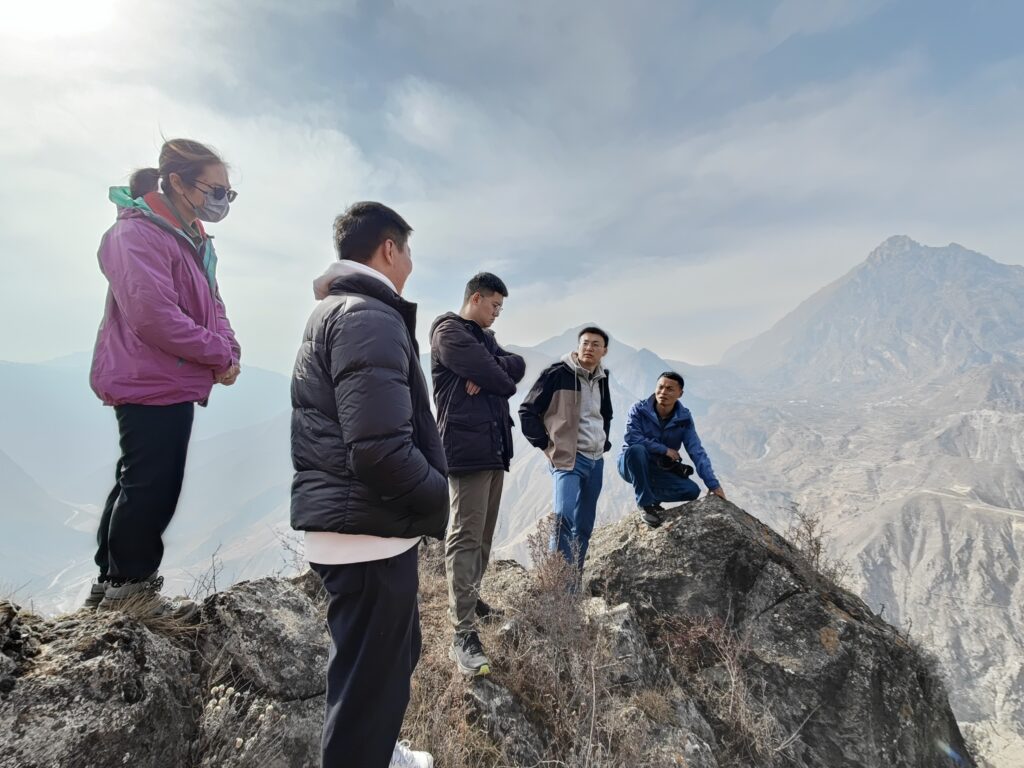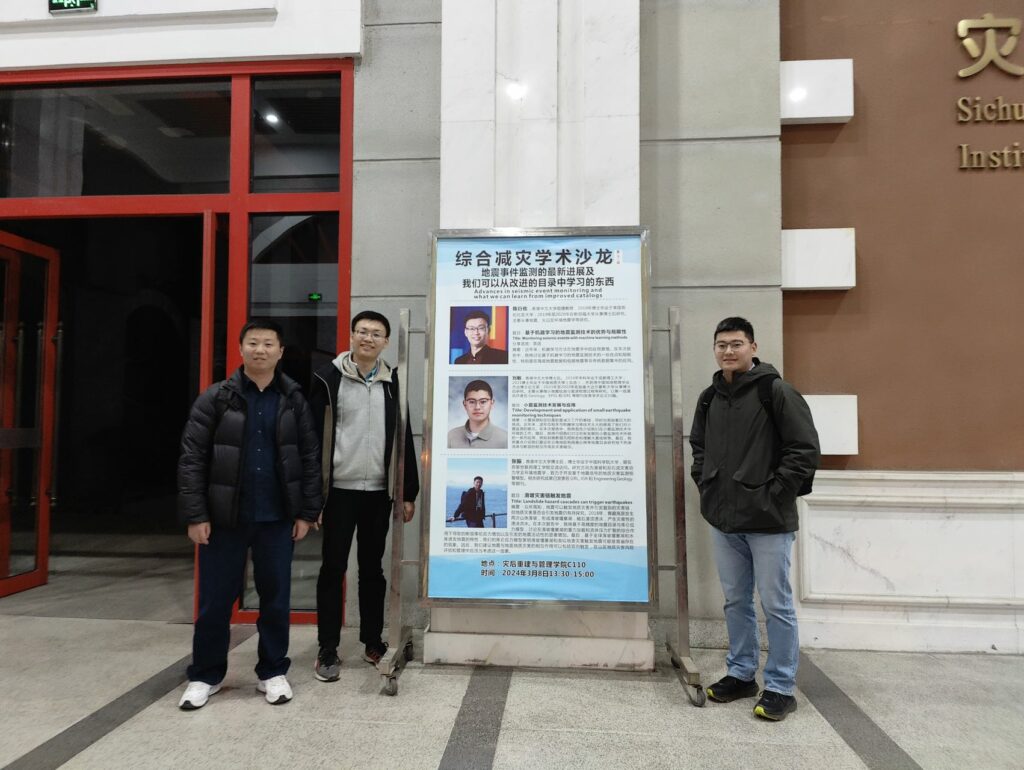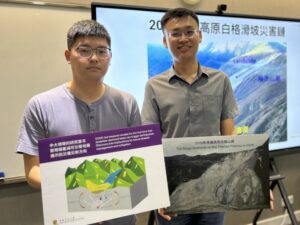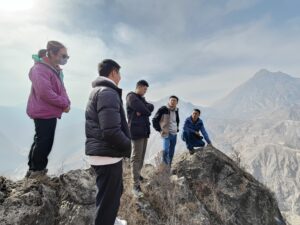CUHK
News Centre
CUHK-led international research reveals for the first time that landslide-dammed lakes can trigger earthquakes
Discovery has implications for future disaster management and mitigation
Earthquakes are typically driven by tectonic plate motion and unpredictable geological changes beneath the Earth’s surface, and their associated ground shaking are known to trigger surface hazards such as landslides and the formation of landslide-dammed lakes (LDL). However, the latest international study led by a research team from the Earth and Environmental Sciences Programme in the Faculty of Science at The Chinese University of Hong Kong (CUHK) has made a groundbreaking discovery, revealing that surface hazards, particularly LDL, can in turn increase stress and water pressure in the Earth, potentially triggering earthquakes.
This research is the first to confirm that earthquakes can be triggered by natural hazards on the Earth’s surface, challenging the conventional understanding of their causes, with significant implications for future earthquake risk management and forecasting. The research findings have been published in the prestigious international science journal Nature Communications.
In 2018, two landslides in the Baige region of the Tibetan Plateau resulted in a total sediment volume of 33 million cubic metres, which is equivalent to 13,000 Olympic-sized swimming pools. Consequently, an LDL was formed (see Figure 1). The CUHK research team observed that in the week following the landslides, more than 60 earthquakes occurred in the area, an occurrence rate over 20 times higher than before the formation of the LDL.
CUHK led an international research team in collaboration with the Swiss Federal Institute for Forest, Snow and Landscape Research, the Chinese Academy of Sciences’ Institute of Mountain Hazards and Environment, and the Sichuan Earthquake Administration. They analysed a high-precision earthquake catalogue constructed using artificial intelligence and constructed an earthquake stress-triggering model. Through this analysis, they showed that the earthquakes mentioned were likely triggered by the gravitational loading and fluid pressure diffusion of the LDL.
Professor Tan Yen Joe, Assistant Professor in the Earth and Environmental Sciences Programme in the Faculty of Science at CUHK, who led the research, stated, “We have demonstrated for the first time that earthquakes can be triggered by natural hazards on the surface.” He explained that when a landslide blocks or dams a river and an LDL forms, the weight pressing down on the subsurface increases as the water level of the lake rises. Simultaneously, water from the lake diffuses into the subsurface and increases the pore pressure. Under the combined effects of these two factors, the stress on nearby faults increases, potentially triggering earthquakes on those faults (see Figure 2).
Dr Zhang Zhen, the first author of the study and a postdoctoral fellow in the Earth and Environmental Sciences Programme in the Faculty of Science at CUHK, highlighted the significant implications of the findings for future earthquake risk management. He cited the example of the 2008 Wenchuan earthquake in China, which triggered over 100,000 landslides and created several hundred LDLs. These LDLs potentially triggered some subsequent earthquakes. This research confirmed that interactions between earthquakes and natural hazards on the surface can occur in both directions and potentially form a disaster loop.
Dr Zhang further emphasised that high-risk areas – seismically active mountainous regions that are prone to large-scale landslides and the formation of LDLs, such as southwestern China and the Himalayas – should take into account the chain effect of LDLs triggering earthquakes in their future assessments of natural hazard risks. Especially after large-scale landslides occur, emergency response teams should be prepared for possible earthquakes.
Climate change-induced growth in the volume of glacial lakes could increase the frequency of earthquakes by a similar mechanism
Dr Liu Min, the second author of the study and a postdoctoral fellow in the Earth and Environmental Sciences Programme in the Faculty of Science at CUHK, pointed out that the rate of glacial melting is expected to increase due to climate change, resulting in an increase in the volume and weight of glacial lakes. This process can create structures similar to LDLs and potentially trigger earthquakes through similar mechanisms. Consequently, climate change may lead to an increase in the frequency of earthquakes in high-risk regions.
Professor Tan added that the research team will conduct additional investigations to determine if similar incidents as observed in Baige in 2018, where landslides trigger earthquakes, have taken place in other regions of the world. This exploration aims to ascertain the prevalence of such phenomena. Additionally, the team will examine the interaction between glacial lakes, which are structures akin to LDLs, and earthquakes. He added that the Baige slope had been gradually moving for decades before suddenly collapsing in 2018, necessitating the emergency evacuation of over 120,000 people. The team hope to conduct further research to identify any precursory signals that could potentially indicate an impending catastrophic collapse of such slow-moving landslides.
The original study can be accessed here: https://www.nature.com/articles/s41467-024-47130-w

The interaction between earthquakes and surface hazards can occur in both directions. Earthquakes can cause landslides, but landslide-dammed lakes can also change the subsurface stress and trigger earthquakes.
















